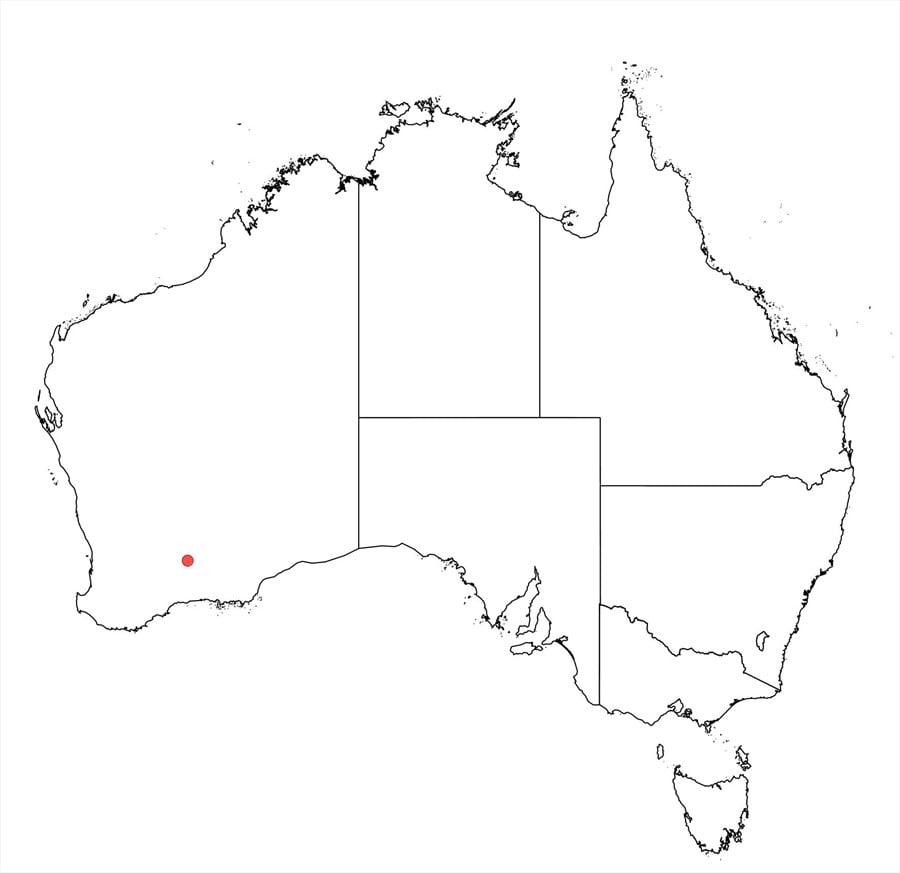Acacia gibsonii Maslin
WATTLE
Acacias of Australia
Common Name
Gibson’s Wattle
Family
Fabaceae
Distribution
South-west W.A. where it is known from a single locality S of the Norseman–Hyden rd. It is common where it occurs but has a very restricted distribution.
Description
Low, spreading, somewhat straggly shrub typically c. 0.5 (–1) m tall and to 1.5 m diam. Branchlets terete, reddish brown aging light grey, sparsely to moderately muriculate by minute, red-brown, glandular trichomes at extremities. Phyllodes oblong to oblong-elliptic, oblong-obovate, sometimes slightly sigmoid, 6–13 mm long, 1.5–3 mm wide, excentrically mucronate with hard, ±pungent mucro, glabrous except normally with minute, red-brown, glandular trichomes on the normally sparsely tuberculate main nerves and margins; longitudinal nerves 3, prominent, widely-spaced; gland obscure, 0.5–1 mm above pulvinus. Spikes short (5–7 mm long when dry), rather densely flowered, sessile or sub-sessile. Flowers 4-merous; sepals shortly united at base, narrowly oblong or spathulate, ⅔ length of petals. Pod ±tightly coiled, c. 12 mm long (unexpanded length), 2.5 mm wide, thinly coriaceous, glabrous, brown. Seeds 2–2.5 long, the aril large, pileiform and creamy white.
Phenology
Flowers Sept.–Oct. with seed in early Dec.
Habitat
Grows in skeletal red loam soils over greenstone, mainly on gentle rocky slopes, in shrubland dominated by Allocasuarina campestris. A. globosa and Calothamnus quadrifidus.
Specimens
W.A.: [localities withheld for conservation purposes] P.G.Armstrong PA 11/577 (NSW, PERTH); N.Gibson 6444 (AD, CANB, K, PERTH).
Notes
Related to the dissimilar-looking A. incongesta which is distinguished by its larger phyllodes, longer spikes which are cream-coloured and much large pods that are not coiled; see B.R. Maslin, Nuytsia 23: 280 (2013) for further discussion.
Conservation
Acacia gibsonii is listed as Priority One under Department of Parks and Wildlife Conservation Codes for Western Australian Flora.
FOA Reference
Flora of Australia Project
Author
B.R.Maslin
This identification key and fact sheets are available as a mobile application:
URL: https://apps.lucidcentral.org/wattle/
© Copyright 2018. All rights reserved.






